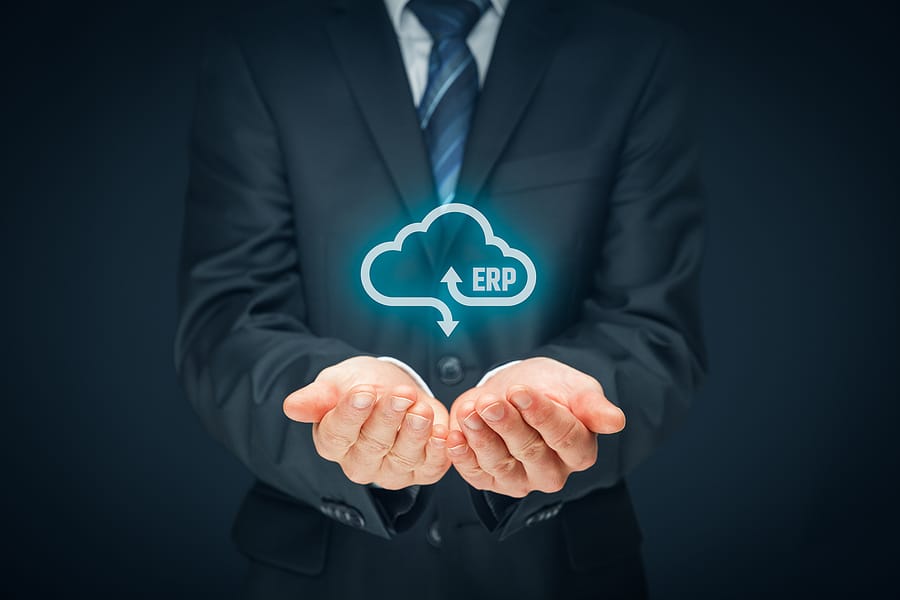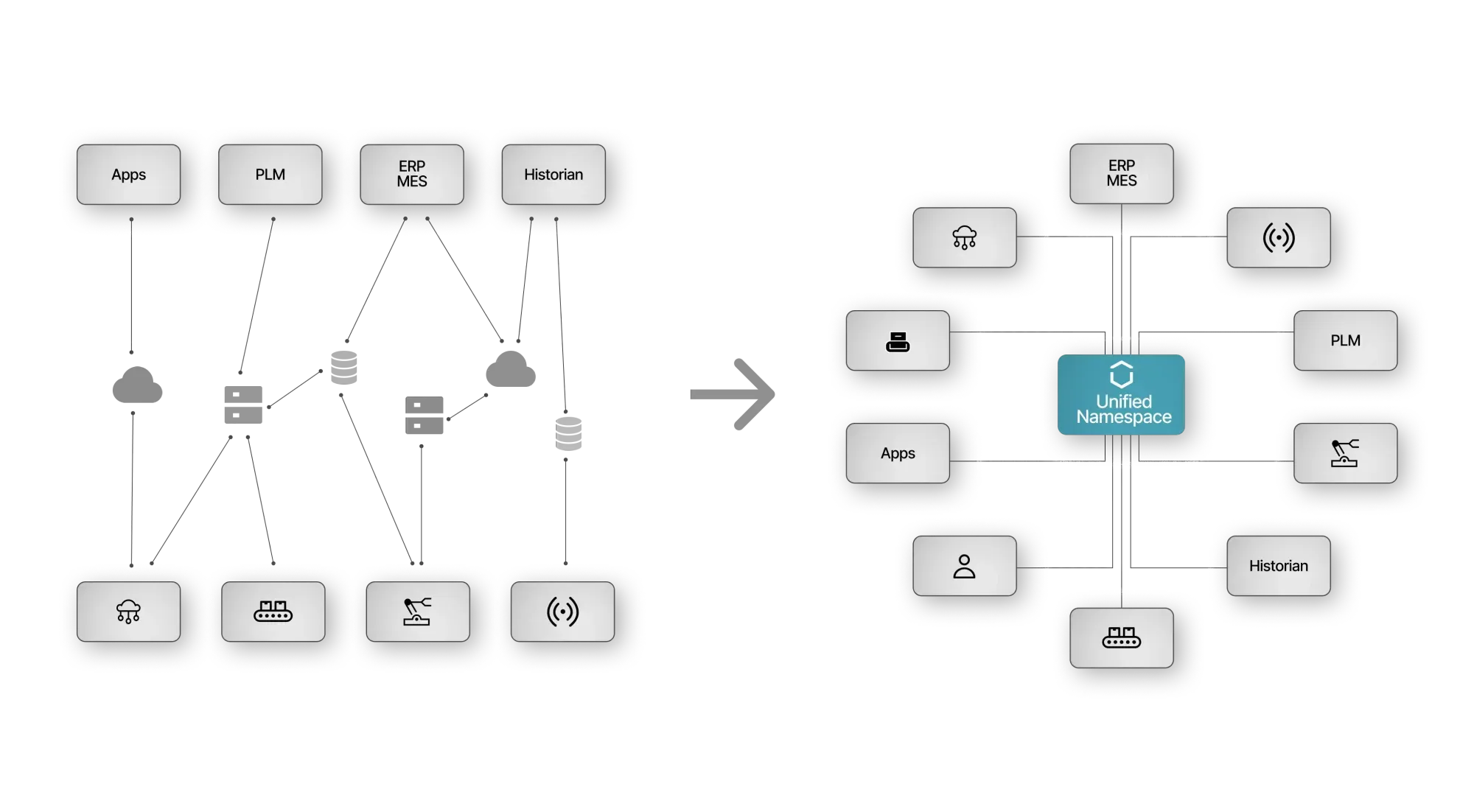This title might seem contradictory, but it perfectly captures a crucial shift happening in the manufacturing industry.
The era when Enterprise Resource Planning (ERP) reigned as the undisputed, central brain of the factory – that era is ending. The heyday of the monolithic ERP system is over. At the same time, ERP as a tool for specific, essential tasks definitely has a future, but in a fundamentally different role. Let's explore this nuance.

Why the traditional ERP model is reaching its limits
The original strength of ERP in the 90s was the integration of core processes into one system. It brought structure and was a huge step forward.
However, it's crucial to realise where ERP comes from: it largely evolved from accounting and administrative systems. The driving force was management's need for an integrated overview of finances and resources, not the direct control or monitoring of the dynamic production environment.
That's why these systems are fundamentally designed for a world of transactional processes: the relatively slow, sequential recording of administrative actions.
The modern factory, especially in sectors like sheet metal processing, operates fundamentally differently. The reality is dynamics and real-time data:
- Continuous streams of machine data.
- Parallel, event-driven processes.
- The need for fast, data-driven decisions right on the shop floor.
This is where the friction occurs. Precisely because ERP has its roots in administration and management reporting, its architecture isn't built for the speed, volume, and diversity of data from the shop floor.
Basic administrative tasks like managing Bills of Materials and processing orders often still work, but the rich, operational data essential for real optimisation remains largely beyond the reach and processing capabilities of the ERP.
This often results in a familiar pattern: the initial implementation is followed by frustration about operational limitations, the need for workarounds (Excel, standalone apps), and eventually a complex IT landscape that hinders rather than enables innovation.
The growing need: Data beyond the factory walls (Industry 4.0)
Today's challenges extend beyond mere internal efficiency. To remain competitive, you must embrace the principles of Industry 4.0, which demands a different approach to data:
- Creating smart feedback loops: Utilise the constant stream of production data (times, quality, machine events, energy) for continuous analysis and improvement. Ensure these insights are quickly shared within the organisation for direct action.
- Improving supply chain collaboration: Efficiently and securely sharing relevant data (like orders, inventory, capacity, quality info) with suppliers and customers is essential for faster response times and a more reliable supply chain.
- Unlocking future data value: The value of data isn't always apparent upfront. A modern platform captures diverse data sets and enables you to analyse them later for new insights or applications, even those not foreseen today.
These requirements make it clear that a rigid, transactional system like traditional ERP simply isn't sufficient as a central data platform. A more flexible, scalable infrastructure is needed.

The solution: The digital ecosystem, with ERP as a specialised node
The future belongs to the distributed digital ecosystem. This is no longer a distant vision, but a practical reality thanks to modern technology and standards. Often, a Unified Namespace (UNS) forms the heart of such an ecosystem: a central, structured data hub acting as the single source of truth for current operational data.
In this model:
- Operational data (from machines, sensors, processes via OPC-UA, MQTT, etc.) is published to the UNS.
- Specialised applications (for planning, analysis, visualisation, AI) consume data from the UNS and publish their results back.
- The ERP system functions as an important 'node'. It consumes data relevant to its core tasks (e.g., production confirmations for cost accounting) and publishes data other systems need (e.g., orders, master data) to the UNS.
The ERP remains essential for what it does well (finance, administration, HR, master data management), but it no longer dictates the architecture or limits operational possibilities. It's part of a more flexible whole. Platforms like the United Manufacturing Hub (UMH) offer open-source solutions to implement such an ecosystem effectively.
Long live ERP: But in its new role
So, the provocative title holds true in this sense: the dominance of ERP as the all-encompassing centre is over. But ERP itself lives on, provided it accepts its new role: a specialised, administrative node within a broader, data-driven ecosystem that is equipped for the demands of modern production and Industry 4.0.
What this means for your business
The question is no longer which ERP system to choose as a replacement, but how to build a future-proof digital landscape. Think about:
- Which administrative processes remain the core task of the ERP?
- What operational data do you need, and how do you unlock it (towards a UNS)?
- Which specialised tools (for planning, BI, quality, etc.) complement the ERP within an integrated ecosystem?
Focus on components, data flows, and open standards. Collaborate with machine suppliers willing to provide data in a structured way.
Finally: Embrace the evolution
The era of the monolithic ERP is ending. That's my conviction, based on the technological and operational reality I observe daily in the manufacturing industry. The future lies in flexible, distributed ecosystems where data can flow freely, and where each component – including the ERP – does what it does best.
By embracing this evolution and investing in a modern architecture (with a UNS as a backbone, for example), you give your company the agility, intelligence, and scalability needed to succeed. The technology is here; it's time to give ERP its new, valuable place and take control of your digital transformation.





